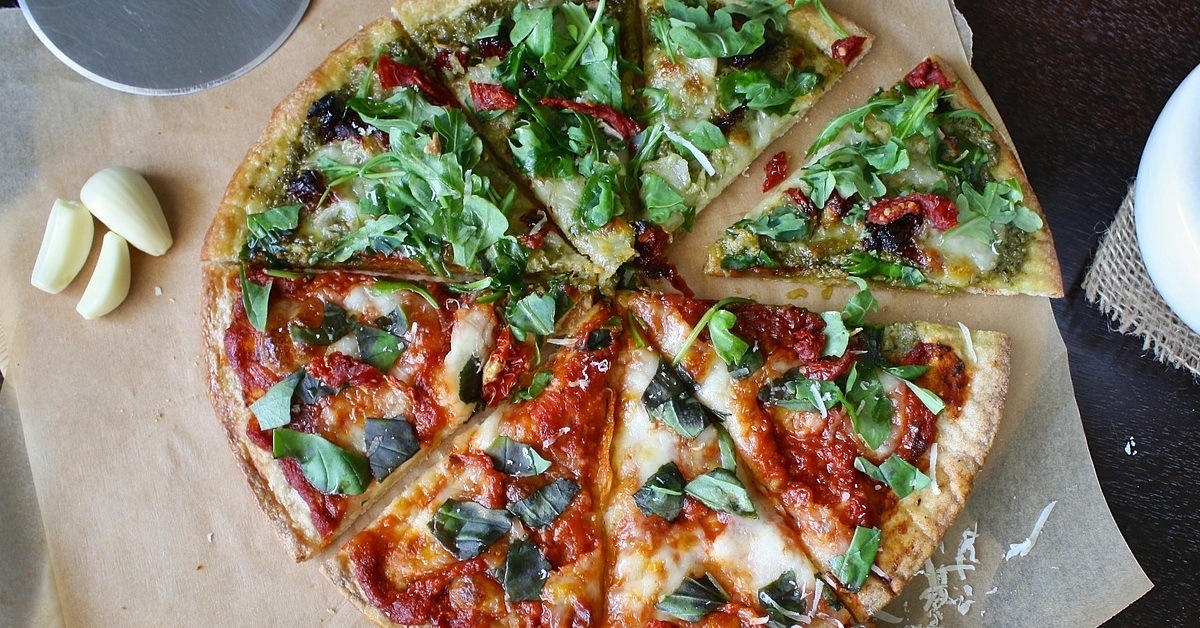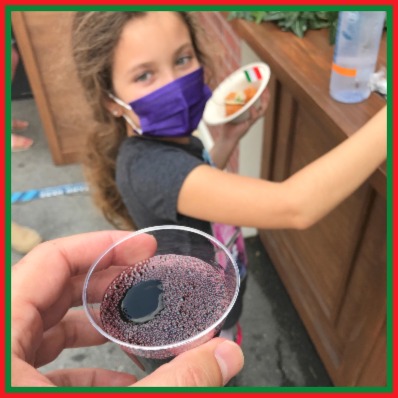What do Italians feed their kids?
Most parents know that, as difficult as it is to stick to a diet yourself, it’s even more challenging to enforce a healthy diet for children. Kids tend to be finicky eaters anyway, and with peer pressure at school and brilliantly targeted marketing by the Big Food industry, it’s really an uphill battle just keep them away from junk, much less get them to eat their vegetables.
What’s more, there’s the guilt factor at play. I follow the Mediterranean Diet myself, so how can I justify giving my kid food that I refuse to put in my own mouth? And my daughter is half Italian… her mother grew up in Sicily eating a delicious and healthy traditional diet. I imagine it’s even more difficult for parents who weren’t raised that way themselves.
So what do Italians feed their kids? Is it just a lot of pasta? Whenever I talk about the diet found in Italy these days, I always make the disclaimer that, even in places like Sicily, the traditional dinner table is starting to give way to the Global Industrial Diet. Fast food, pre-made meals, highly processed snacks, and sugary soft drinks have now replaced the positions where favorite family recipes used to sit.
So, no surprise, Italy is now like the United States: four out of ten children are overweight and two out of ten are obese. The problem is not only due to junk food, but to what has become the “New Mediterranean Diet,” which is to say too much bread, pasta, pizza and potatoes, with fewer fresh vegetables.
BUT, there’s some good news out there, too!
Naturally, it takes an Italian doctor (now working in California) to step in and speak some common sense–with the science to back it up. Enter Valter Longo…
With a team of pediatric nutrition experts, Dr. Longo has converted his world-famous longevity diet into a regime that can be followed from an early age. Compared to the advice in his best selling book, “The Longevity Diet” (for adults), there are obviously some differences to accommodate healthy growth and development.
“Unlike what I suggest for adults,” Longo explains, “I recommend a portion of red meat, a piece of white meat and 2-3 eggs a week for children and young people. Many children do not eat fish and therefore for them we must compensate with legumes and (preferably organic) white meat. In addition, a few portions of cheese per week and some grated cheese on pasta or rice is fine.” There is no need for children to “fast” in any way, which might be appropriate for many adults. But restricting a time frame of 12 hours in which to limit meals is a good idea.

In his book “La Longevità inizia da bambini” (“Longevity Begins in Childhood”), Longo responds to the most common doubts of Italian mothers: from feeding during pregnancy, to the adequacy of vegetarian diets in adolescence; from the quantities of food suitable for a baby in the weaning phase, to the right amount of milk for when the child is three years-old.
Research has also informed us about how children eat at school. Here too the critical points are obvious enough: too much protein (often different protein sources in a single meal: pasta with meat sauce, cooked ham and peas), an abundance of red meat (in some municipalities up to 13 meals per 20 a month are meat, 10 of which are red meat), a low variety of grains, monotonous vegetable choices, and very few legumes.
“What was not underscored until recently,” concludes Longo, “is that an occasional can of cola or a random unhealthy snack is a minor problem compared to a weekly diet with lots of meat, cheese and above all, large portions of pasta, bread, rice and potatoes, which provide 1.5 kilograms (3.3 pounds) of sugar a week at a metabolic rate not very different from that of junk food or carbonated soft drinks.”
A Healthy Diet for Children
TWELVE RULES for parents to follow:
1. Nothing should be missing in their kid’s diet: proteins, fats, carbohydrates, minerals, vitamins, fiber and water. All nutrients are needed and especially in a child’s diet, nothing important should be missing.
2. Protein: let them get the right level according to their age. For the child after 4 years, unless otherwise advised by the pediatrician, it would be good to keep around 0.9 grams of protein per kilogram of body weight per day. So if your child weighs 30 kg, it is about 27 grams of protein a day.
3. Keep an eye on carbohydrates: limit the “4Ps” (pane/bread, pasta, pizzas and potatoes), rice and fruit juices. For children and young people who have to lose weight, replace a part with vegetables and / or legumes. The proposal is to replace even just 50-60 grams of potatoes, rice, bread with 100 grams of carrots, broccoli, beans, chickpeas, extra lettuce per day. An acceptable quantity for children and youngsters, but which can make an enormous difference in the long term from the nutritional and weight point of view and can be useful to accustom the child to continue eating like this.
4. Fats: do not remove them, but pay attention to the type and quantity. It is necessary to minimize saturated, hydrogenated and trans fats present in creams, cheeses, butter, sauces, snacks and bakery products, and it is essential to limit them even more in situations of severe obesity. The child must instead consume regularly, but without exaggerating, extra virgin olive oil, salmon, sardines, walnuts, almonds and hazelnuts.
5. Limit salt and sugar. The liver uses excess sugars to generate fat that is stored in the liver itself or transferred to various storage points, including the abdomen (visceral fat) and areas distributed throughout the body under the skin (subcutaneous fat). But be careful not to demonize all desserts, ice creams: sometimes a dessert doesn’t hurt. But it is better if you respect some rules: better the dark chocolate or a fruit ice cream.
6. Eat within a 12 hour window: if you finish breakfast at 8 o’clock you have to have dinner at 8pm. In adults it is amply demonstrated that with the same number of calories introduced, the subjects who eat their meals within 12 hours. They present a lower risk of overweight and metabolic disorders.
7. Choose simple foods from the local tradition. The dishes normally found on the tables of our parents, grandparents and great-grandparents still provide us with a good example. This makes it possible to limit the use of fast food and industrial products.
8. Eat more, not less, but better. The choice of the right combination of foods (such as at lunch, 50-60 grams of pasta with plenty of vegetables and 1-2 teaspoons of olive oil to which 200-250 grams of chickpeas and vegetables can be added for dinner) allows more abundant, healthier and complete meals from a nutritional point of view and that will determine a lasting sense of satiety thanks to the good balance of nutrients (complex carbohydrates, proteins and fats).
9. Don’t overdo the rules: avoid severe and prolonged calorie restrictions. In the same way that in adults, severe and prolonged caloric restrictions are not good. They have negative effects if they last for a long time as they slow down the metabolism and favor a possible return to the original obesity, as well as causing potential negative effects on the immune system.
10. Measure, measure, measure. Monitor body weight and abdominal circumference by taking measurements once a month for normal weight children and once every two days for overweight, obese or underweight children. There are data that have shown that abdominal fat in children and young people between the ages of 5 and 17 is associated with an increase in triglycerides, LDL cholesterol, HDL and insulin.
11. Avoid a sedentary lifestyle: for example by practicing at least one hour of athletic activity and an hour of walking a day. Walking, cycling and playing for at least an hour a day. Children and adolescents between the ages of 5 and 17 should practice at least 60 minutes of moderate-to-vigorous daily physical activity and exercises to strengthen the musculoskeletal system at least three times a week.
12. Organize meals by dividing the daily intake into 4-5 moments (breakfast, snack and snack, lunch and dinner). Unlike what is suggested for adults (two meals and a snack for those who are overweight), for children it is advisable to divide the daily intake into 4-5 meals. But be careful to limit the calories and carbohydrates/starches responsible for weight gain.
What Do Italians Feed Their Kids?
First Course (Primo Piatto). Every day a grain-based dish for lunch or dinner. The alternatives: pasta, whole wheat pasta, rice, polenta, potatoes, other cereals (spelt, barley), pizza. Weekly frequency: for pasta (twice) for other cereals once a week. Quantity: from 7-10 years between 50 and 60 grams; from 11 to 14 years between 70 and 80 grams; from 15 to 17 years from 90 to 100 grams.
Side dish (Contorno). Every day a vegetable-based dish for both lunch and dinner. Leafy vegetables, salad (50 to 100 grams depending on age), raw vegetables (100 to 200 grams) and cooked vegetables.
Main Course (Secondo Piatto). Every day a dish of protein for lunch or dinner. Red meat once a week, white meat once a week, fresh vegetables 2-3 times a week, fish 2-3 times a week, eggs (only one up to 10 years) twice a week, cold cuts (no more than 40 grams) only once a week, fresh or seasoned cheeses (no more than 30 grams) at most once a week.
Bread. (Pane) Every day for lunch and dinner. The best choice is whole grain bread, from 50 to 110 grams, depending on age.
Extra virgin olive oil (Olio di Oliva). Every day for lunch and dinner. Up to 15 to 20 grams per meal.
Snack or slice of cake. (Merenda) Only if made at home. At most twice a week. Alternatively, organic seasonal fruit (a small banana, a medium apple, 4 apricots or a cup of blueberries), a fruit bar, 20 to 30 grams of nuts; 20 to 40 grams of dark chocolate; bread and jam choosing whole meal bread and jam with high fruit content and no other added sugars.
If you read Italian and want to read Dr. Longo’s advice for yourself, here’s an article found on Huffington Post Italia: Bimbi sempre più obesi per la Dieta Mediterranea

Key Takeaways
1.
While there are many similarities to a healthy diet for adults, children have unique metabolic needs which should be addressed in order to promote healthy development.
2.
The “New Mediterranean Diet” emerging in Italy recently is an unhealthy over-supply of bread and “The 3 P’s,” pasta, pizza and potatoes.
3.
Kids need to move their bodies and get some exercise. Aim for at least one hour of athletic activity, and an hour of walking every day.
